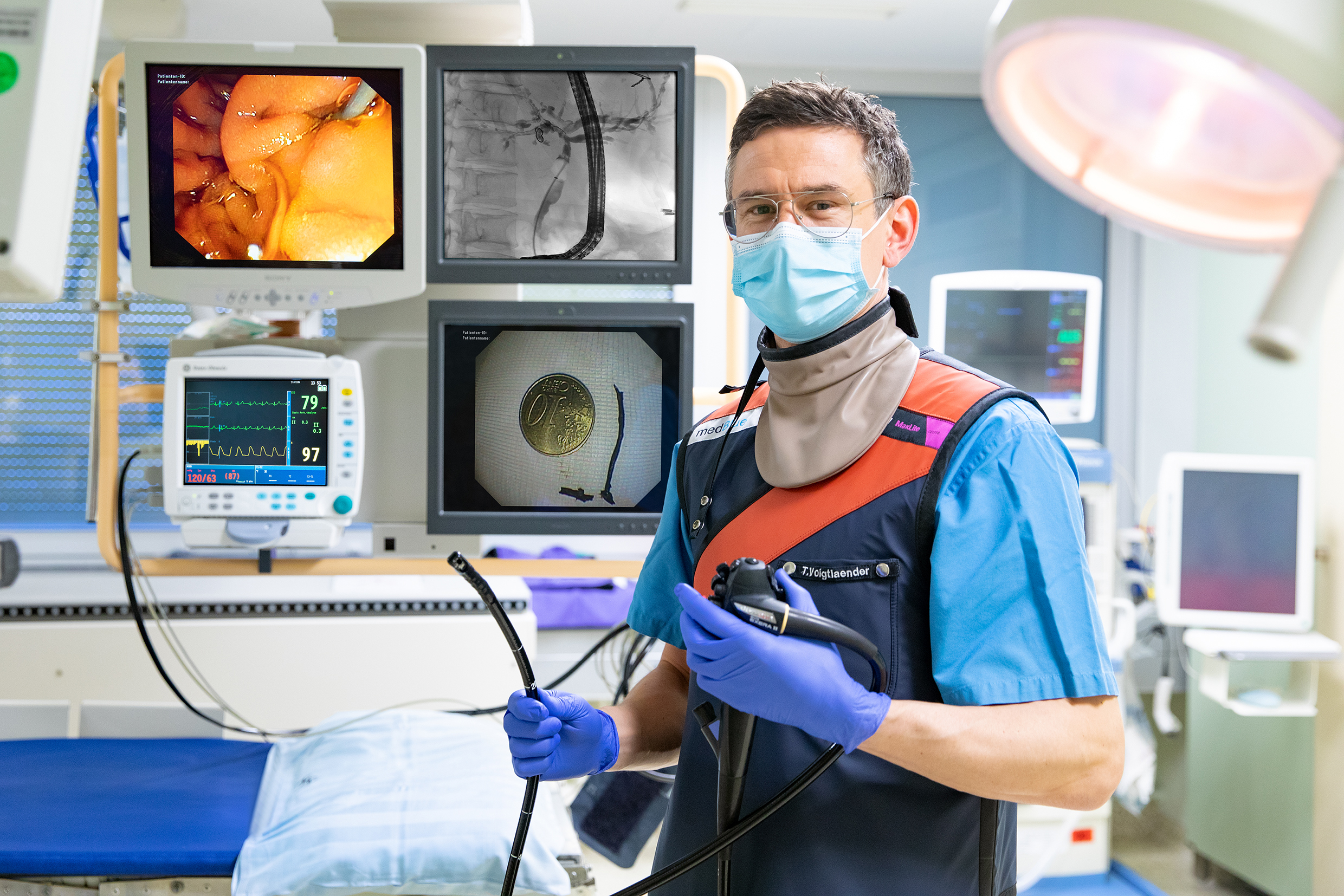DFG funds multicentre study with 1.3 million euros

PD Dr. Torsten Voigtländer with a special endoscope for the examination and treatment of the bile ducts. Copyright: Karin Kaiser / MHH.
06.05.2021
With growing advances in intensive care medicine, more and more patients are surviving the most serious illnesses, accidents or massive surgical interventions such as organ transplants. At the same time, the risk of a dangerous complication is increasing: because the blood pressure often drops in seriously ill patients and the vessels are therefore less well supplied with blood, the fine bile ducts in the liver can become blocked and the bile can no longer flow out. The so-called secondary sclerosing cholangitis in critically ill patients (SSC-CIP) leads to progressive destruction of the bile duct tree and ends fatally in every second patient. Those with severe COVID-19 are also affected, as intensive mechanical ventilation and abdominal positioning seem to further this development. Because SSC-CIP is a rare disease, there are no binding recommendations for diagnosis and therapy. This gap is now to be closed by a multicentre clinical study led by PD Dr. Torsten Voigtländer, Senior Consultant Endoscopist at the Clinic for Gastroenterology, Hepatology and Endocrinology at the Hannover Medical School (MHH). The German Research Foundation (DFG) is funding the project for three years with around 1.3 million euros.
Improving the survival chances of SSC-CIP patients
"We are collecting data from SSC-CIP cases from ten clinics throughout Germany in order to understand the exact mechanisms of disease development and draw conclusions about suitable treatment strategies," says PD Dr Voigtländer. Currently, the most common therapeutic approach is to clean and dilate the narrowed bile ducts with the help of a special endoscope and to remove existing blockages. "Despite this treatment, however, cholangitis sometimes progresses, the bile ducts harden and, in the final stage, the liver fails and only organ transplantation remains as a last resort," explains the gastroenterologist. Moreover, it is unclear whether the repeated endoscopic interventions into the bile ducts are at all helpful for the course of the disease. This is because every time endoscopes, catheters or guide wires are inserted into what is actually a sterile system, the risk of bacterial infection or even blood poisoning increases. "Our study is the first to clarify whether regular endoscopic cleaning of the bile duct system actually improves or worsens the course of SSC-CIP," emphasises the physician.
The aim of the study is to develop a standard therapy based on proven efficacy that improves patients' chances of survival. And in the gastroenterologist's view, this is all the more necessary because SSC-CIP is probably not as rare as previously assumed. "The disease is rather unknown and therefore the number of cases is probably underestimated," says the senior physician. This is also shown by experience from the MHH. While 54 patients with SSC CIP were identified between 2001 and 2011, there were already 120 affected between 2012 and 2020. And this does not even include seriously ill COVID-19 patients.
SERVICE:
For further information, please contact PD Dr Torsten Voigtländer, voigtlaender.torsten@mh-hannover.de, phone (0511) 532-2406.